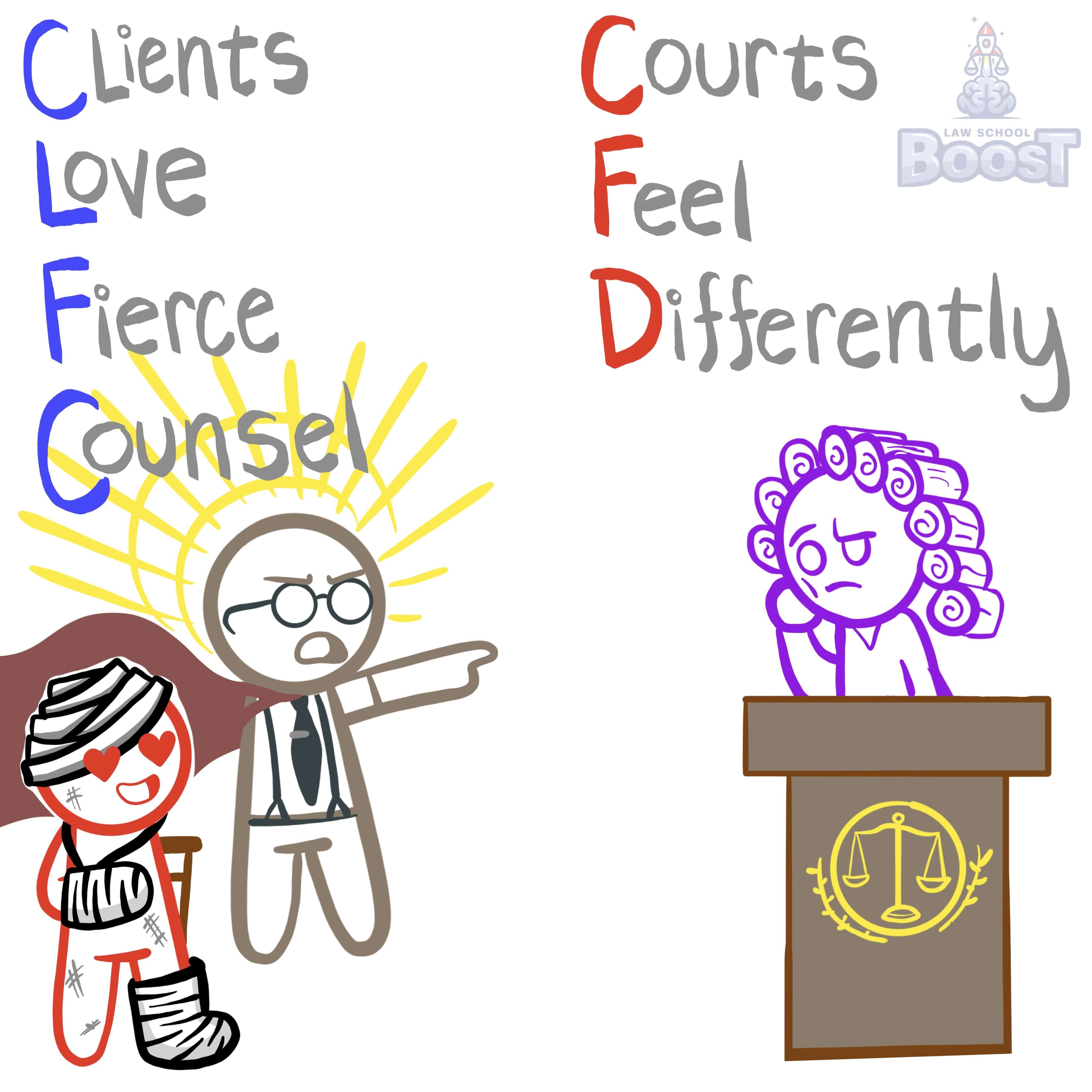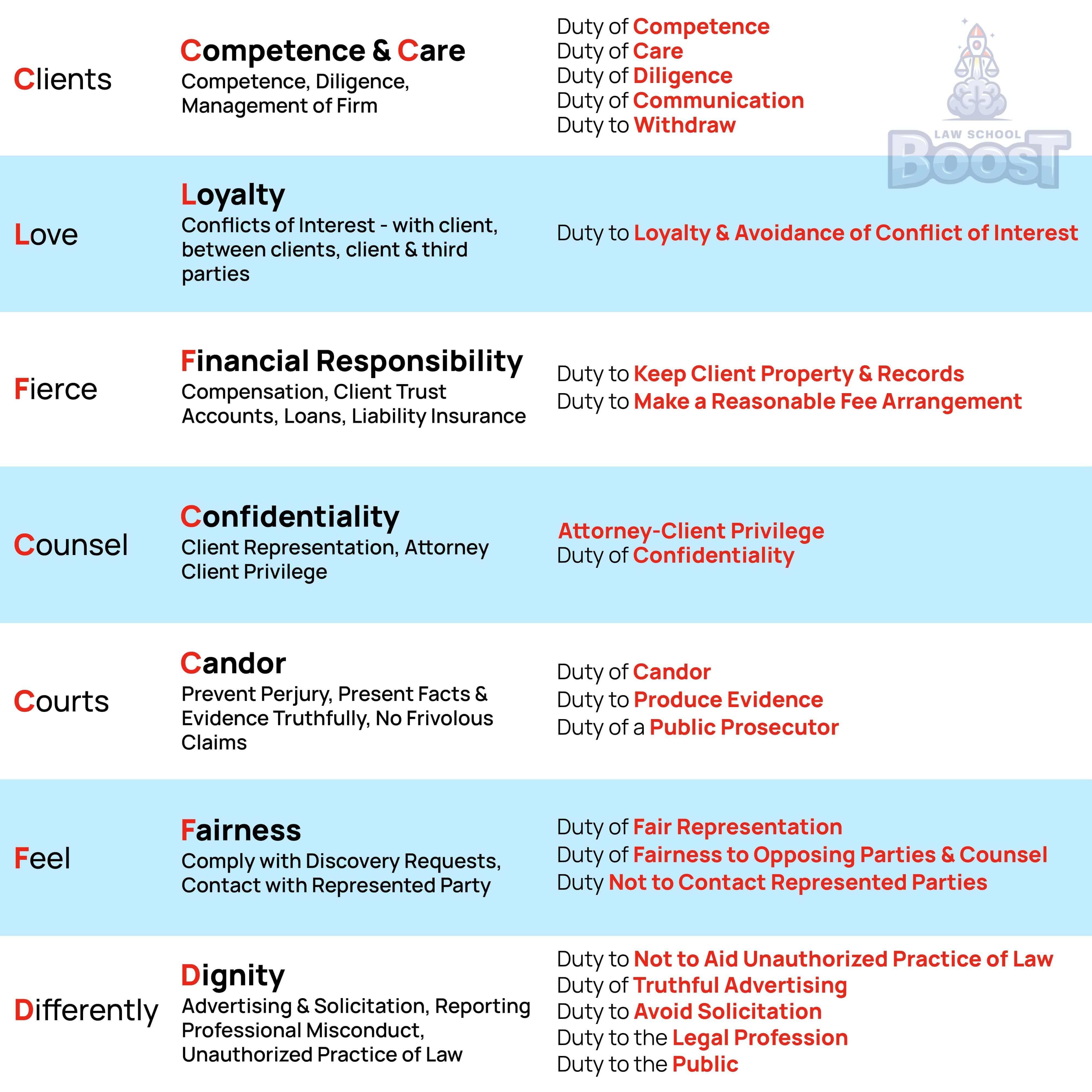‼️
Prof Responsibility • Candor
PR#081
Legal Definition
A lawyer must get consent of the organization's counsel before communicating with a constituent of the organization: (1) who supervises or regularly consults with the organization's lawyer about the matter; (2) who has authority to obligate the organization with respect to the matter; or (3) whose conduct in the matter may be imputed to the organization. The lawyer may, however, consult with all other constituents without consent.
Plain English Explanation
A lawyer cannot contact certain key people within the organization without the consent of the organization's attorney. Specifically, this includes:
(1) The bigwigs: Those who supervise or regularly talk to the organization's lawyer about the matter at hand. This covers the decision-makers who are closely involved in the legal strategy.
(1) The dealmakers: Those who have the power to bind the organization in the matter. These are the folks who can say "yes" or "no" to settling the case or making other key decisions.
(1) The potentially liable: Those whose actions related to the matter could get the organization in legal hot water. If an employee's conduct might make the company liable, that person is off-limits.
However, the rule does allow a lawyer to communicate directly with other employees or representatives not falling into those categories. This preserves some ability to gather facts and information.
The rationale behind this rule is to prevent lawyers from taking advantage of represented parties, interfering with existing attorney-client relationships, or circumventing opposing counsel. It helps ensure that represented parties have the full benefit of their counsel's advice before engaging with opposing lawyers.
At the same time, the rule tries to strike a balance by not completely barring access to relevant organizational employees. This allows for some appropriate fact-finding and investigation to occur.
(1) The bigwigs: Those who supervise or regularly talk to the organization's lawyer about the matter at hand. This covers the decision-makers who are closely involved in the legal strategy.
(1) The dealmakers: Those who have the power to bind the organization in the matter. These are the folks who can say "yes" or "no" to settling the case or making other key decisions.
(1) The potentially liable: Those whose actions related to the matter could get the organization in legal hot water. If an employee's conduct might make the company liable, that person is off-limits.
However, the rule does allow a lawyer to communicate directly with other employees or representatives not falling into those categories. This preserves some ability to gather facts and information.
The rationale behind this rule is to prevent lawyers from taking advantage of represented parties, interfering with existing attorney-client relationships, or circumventing opposing counsel. It helps ensure that represented parties have the full benefit of their counsel's advice before engaging with opposing lawyers.
At the same time, the rule tries to strike a balance by not completely barring access to relevant organizational employees. This allows for some appropriate fact-finding and investigation to occur.
Hypothetical
Hypo 1: Bob is representing Sam in a personal injury lawsuit against MegaCorp. Bob wants to interview some MegaCorp employees about the incident. He calls up Jane, a low-level employee who witnessed the accident, and asks to meet with her to discuss what she saw. Result: Bob's actions are likely permissible. As a witness who does not fall into any of the prohibited categories, Jane can be contacted directly without going through MegaCorp's attorney. She does not supervise or regularly consult with the company's lawyers, does not have authority to make decisions about the lawsuit, and her conduct is not at issue in the case.
Hypo 2: Bob is suing EnerCo on Sam's behalf for breach of contract. Bob calls up Tom, EnerCo's CEO, to discuss settling the case. Result: This direct contact violates the rule. As CEO, Tom almost certainly has authority to make decisions about the litigation on EnerCo's behalf. Bob must go through EnerCo's attorney to discuss settlement with Tom.
Hypo 3: Bob represents Sam in a employment discrimination case against TechFirm. Bob emails Sarah, the HR manager who fired Sam, asking for her side of the story. Result: This communication is not allowed. As the person who carried out the allegedly discriminatory firing, Sarah's conduct would likely be imputed to TechFirm for purposes of the lawsuit. Bob needs to get permission from TechFirm's lawyer before contacting Sarah about the case.
Hypo 4: Bob is defending Sam against criminal charges. The prosecutor, Amy, calls Sam directly to discuss a possible plea deal. Result: Amy has violated the rule by contacting Sam without Bob's permission. Even though Amy is not technically opposing counsel in a civil case, the prohibition still applies in criminal matters. Prosecutors must go through defense counsel to communicate with represented defendants about their cases.
Hypo 5: Bob represents Sam in a contract dispute with WidgetCo. Bob calls up WidgetCo's procurement manager, who is not involved in the disputed contract, to ask about the company's general procurement policies. Result: This contact would likely be allowed. Discussing general company policies unrelated to the specific dispute with an employee not connected to the litigation falls outside the scope of the rule's prohibitions. Bob is not communicating about the subject of the representation with someone in a protected category.
Hypo 2: Bob is suing EnerCo on Sam's behalf for breach of contract. Bob calls up Tom, EnerCo's CEO, to discuss settling the case. Result: This direct contact violates the rule. As CEO, Tom almost certainly has authority to make decisions about the litigation on EnerCo's behalf. Bob must go through EnerCo's attorney to discuss settlement with Tom.
Hypo 3: Bob represents Sam in a employment discrimination case against TechFirm. Bob emails Sarah, the HR manager who fired Sam, asking for her side of the story. Result: This communication is not allowed. As the person who carried out the allegedly discriminatory firing, Sarah's conduct would likely be imputed to TechFirm for purposes of the lawsuit. Bob needs to get permission from TechFirm's lawyer before contacting Sarah about the case.
Hypo 4: Bob is defending Sam against criminal charges. The prosecutor, Amy, calls Sam directly to discuss a possible plea deal. Result: Amy has violated the rule by contacting Sam without Bob's permission. Even though Amy is not technically opposing counsel in a civil case, the prohibition still applies in criminal matters. Prosecutors must go through defense counsel to communicate with represented defendants about their cases.
Hypo 5: Bob represents Sam in a contract dispute with WidgetCo. Bob calls up WidgetCo's procurement manager, who is not involved in the disputed contract, to ask about the company's general procurement policies. Result: This contact would likely be allowed. Discussing general company policies unrelated to the specific dispute with an employee not connected to the litigation falls outside the scope of the rule's prohibitions. Bob is not communicating about the subject of the representation with someone in a protected category.
Visual Aids


Related Concepts
Can lawyers compensate witnesses?
How do the rules in California differ regarding how a lawyer balances their Duty of Candor with their criminal defendant client's right to testify if they believe the client intends to lie?
How must a lawyer balance their Duty of Candor with their criminal defendant client's right to testify if they believe they intend to lie?
In California, can an attorney disclose information to set the record straight if one of their witnesses intends to lie?
What are the 9 Affirmative Duties of a Public Prosecutor?
What is an ex parte proceeding, and how does it affect what a lawyer must disclose?
What is the Duty Not to Contact Represented Parties?
What is the Duty of Candor?
What is the Duty to Produce Evidence?
What must a lawyer do if they know that their witness intends to lie in their testimony?


